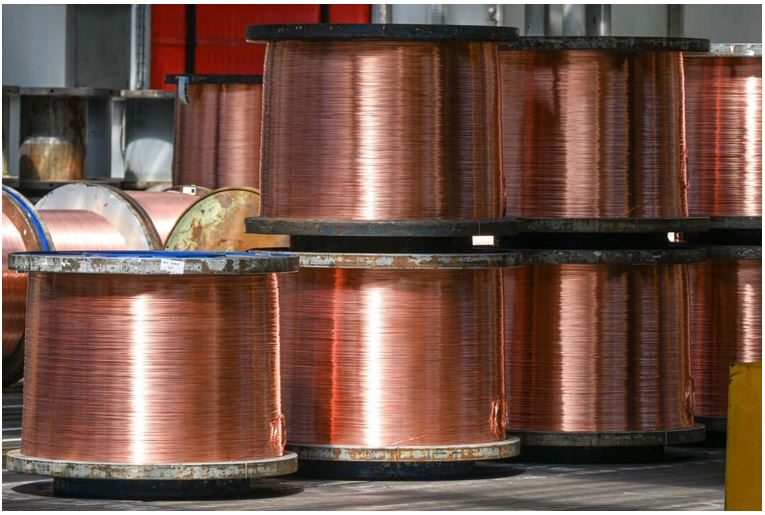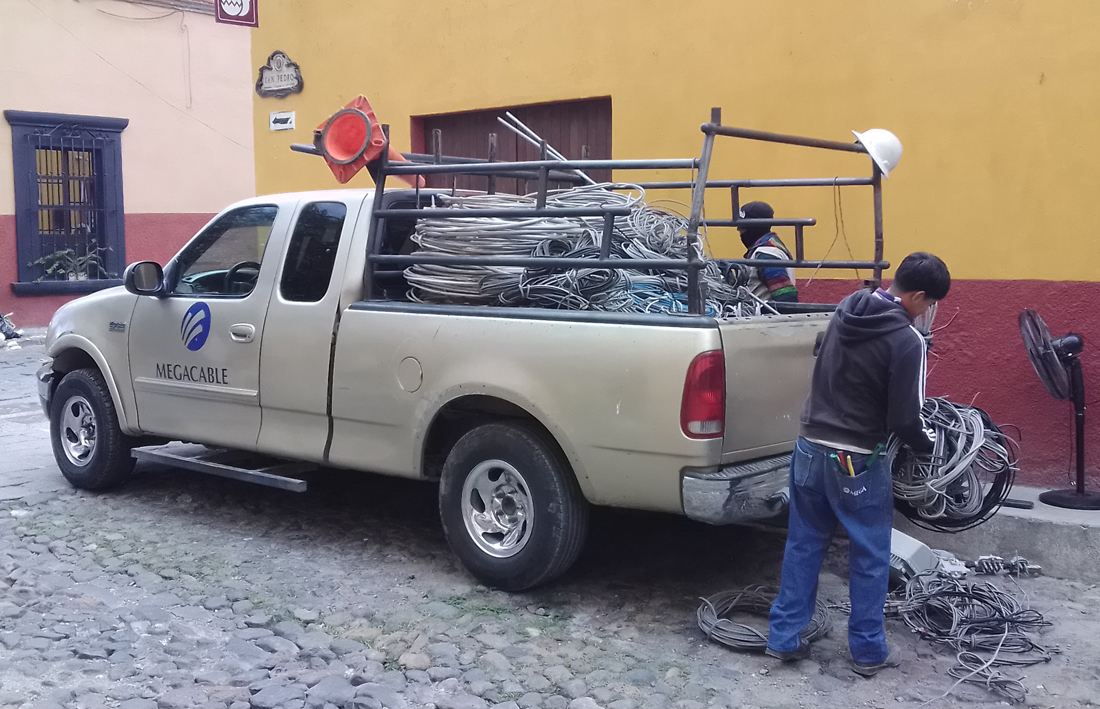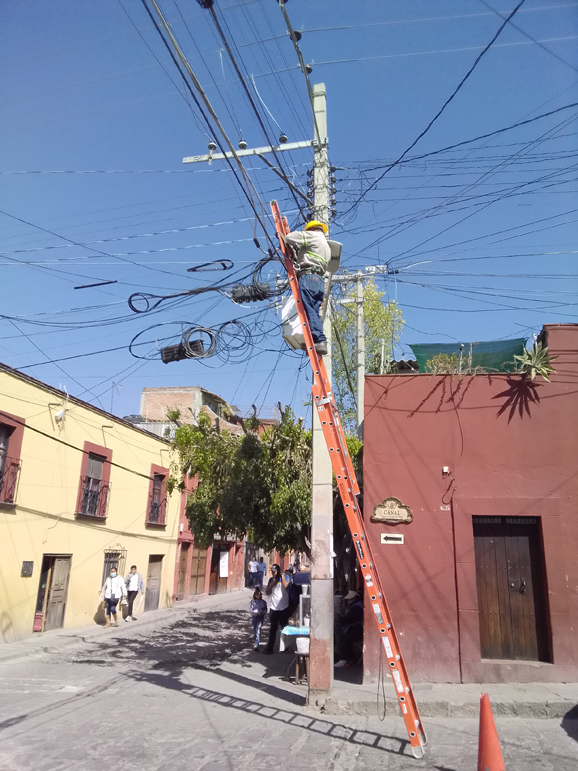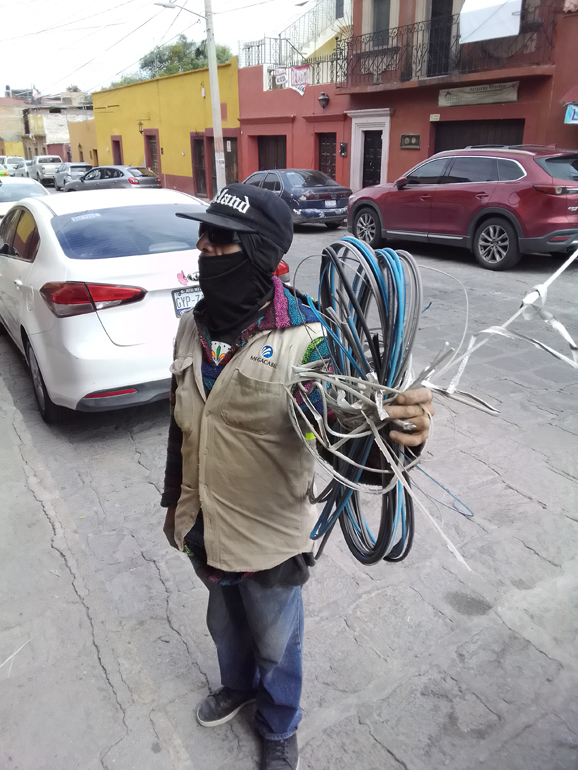 Español
Español
July 20, 2025
by Charles Miller
The sun started to rise over my street as I returned from the gym one recent morning revealing coils of wire spaced intermittently along the curb. Following the trail, I soon found that there were copper miners hard at work. With the price of refined copper hovering around ten thousand U.S. dollars per metric ton there is sufficient motivation for utilities to recycle old copper wire, and that is exactly what the telephone company and cable TV companies in San Miguel have been busy doing.
For a host of reasons it is commendable that these companies have shown such interest in recycling. The crew working my street was busily climbing ladders to disconnect overhead wires from poles and cutting loose the cables to people's houses. Their ladders could not reach to the third-floor level and this left a bunch of cut-off wires dangling on the facade of my apartment building. When I offered that one of the workers could come inside to use the stairs to the roof, he cheerfully obliged— and came down with an armful of copper wires. Soon they had a pickup truck fully loaded with old copper wires on the way to be recycled.

The reason there is so much valuable copper available to be mined from above and below the streets of San Miguel is that for several years our telecommunications providers have been phasing in upgrades to their old equipment. Around the world, communications companies are replacing copper wires with fiber optic cables, and not just because raw materials needed for copper wire is so expensive while the sand used to manufacture fiber optic is dirt cheap. Fiber optics offer significant advantages in performance, reliability, and security compared to copper cables.
A common misconception is that internet connections delivered via fiber optic are faster. They are not, (not yet); they are potentially faster. Copper cables can reliably conduct internet connection speeds twenty times faster than what is needed today for the average bandwidth speeds available from local Internet Service Providers. Fiber optics have the potential to support speeds 200 times faster than today's internet speeds. So you can say this makes it "future-proof" because it has so much more excess capacity than does copper. So there is no need to panic if your neighborhood still uses copper because it might be decades before you actually need the higher capacity of fiber optic.

Fiber optic does have some other advantages such as the fact that signals degrade much less over distance, allowing data to be transmitted over several kilometers without the need for signal boosters or repeaters. For internet connections, most copper cables for residential use need to be less than 100 meters long. Fiber optic is immune to RF (radio frequency) interference as well as EMI (electromagnetic interference).
Fiber optic cables are thinner, lighter, and stronger than copper wire. They are resistant to corrosion, moisture, and temperature changes, and since fiber optic cannot conduct electricity this completely eliminates the hazard of electrical shocks.

And last but not least, fiber optic has a lower TCO (total cost of ownership) over the long term. Our local telecommunications providers see this, and we can all see cleaner overhead views as old unused copper cables are taken down from poles for environmentally-friendly recycling.
**************

Charles Miller is a freelance computer consultant with decades of IT experience and a Texan with a lifetime love for Mexico. The opinions expressed are his own. He may be contacted at 415-101-8528 or email FAQ8 (at) SMAguru.com.
**************
*****
Please contribute to Lokkal,
SMA's online collective:
 ***
***
Discover Lokkal:
Watch the two-minute video below.
Then, just below that, scroll down SMA's Community Wall.
Mission

Visit SMA's Social Network
Contact / Contactar

